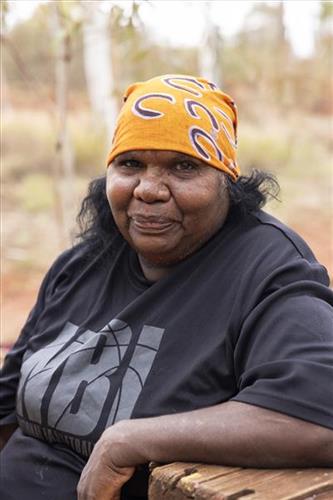111582400878
Ladies Gathering
“These are the ladies gathering and learning [teaching] young girls. We learn from the oldest and pass it down to the younger generation. These are the ladies in the scrub and around are the dry claypans.
We take them out and show the younger girls to hunt and prepare food and bush medicine, to make fire, and collect bush tucker. We show them how to find water, where to walk for the waterhole. We learn them to paint and collect weaving grass for the elders to weave.”
– Roxanne Anderson
In this artwork Roxanne illustrated the transfer of knowledge from elders to younger Martu generations. During the pujiman (traditional, desert dwelling) period, Martu would traverse vast distances annually in small family groups, moving seasonally from water source to water source and hunting and gathering bush tucker as they went. Although desert life has moved away from mobile hunter-gatherer subsistence throughout the course of the twentieth century, bush tucker remains a significant component of the modern Martu diet and continues to play a crucial role in passing down cultural knowledge.
While hunting and gathering implements have been modernised, methods of harvesting, tracking and the use of fire burning to drive animals from their retreats are still commonly practiced today.
Visual arts also play a vital role in preserving Martu culture. Younger Martu artists typically begin painting with their parents, grandparents and extended family, creating an organic learning process that encompasses not only painting techniques but also knowledge of specific locations, family histories, traditional ways of life, bush tucker and Jukurrpa (Dreaming).




